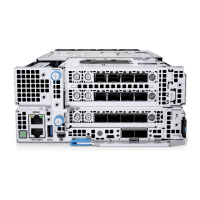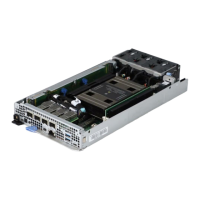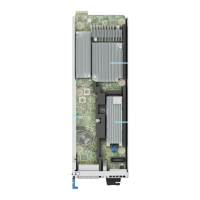NVMe Settings
This option sets the NVMe drive mode.
To view the NVMe Settings screen, power on the system, press F2, and click System Setup Main Menu > System BIOS >
NVMe Settings.
Table 43. NVMe Settings details
Option Description
NVMe Mode If the system contains NVMe drives that you want to configure in a RAID array,
you must set both this field and the Embedded SATA field on the SATA Settings
menu to RAID Mode. You may also need to change the Boot Mode setting to UEFI.
Otherwise, you should set this field to Non RAID Mode. The option is set to Non
RAID mode by default.
BIOS NVMe Driver Dell Qualified NVMe drives always use the UEFI NVMe driver built into the Dell BIOS.
When this option is set to All Drives, the BIOS driver will also be used with any NVMe
drives in the system that has not been qualified by Dell.
NOTE: When this option is set to All Drives and non-Dell qualified NVMe drives
are present, you have a configuration that has not been validated which may lead
to unexpected behavior.
The available options are Dell Qualified Drives and All Drives. This option is set to
Dell Quailifed Drives by default.
Boot Settings
Boot Settings enables you to specify the boot order. The Boot Settings only support UEFI mode.
● UEFI: The Unified Extensible Firmware Interface (UEFI) is a new interface between operating systems and platform
firmware. The interface consists of data tables with platform related information, boot and runtime service calls that are
available to the operating system and its loader. The following benefits are available when the
Boot Mode is set to UEFI:
○ Support for drive partitions larger than 2 TB.
○ Enhanced security (e.g., UEFI Secure Boot).
○ Faster boot time.
NOTE: You must use only the UEFI boot mode in order to boot from NVMe drives.
To view the Boot Settings screen, power on the system, press F2, and click System Setup Main Menu > System BIOS >
Boot Settings.
Table 44.
Boot Settings details
Option Description
Boot Mode Enables you to set the boot mode of the system. This option is set to UEFI by
default.
Boot Sequence Retry Enables or disables the Boot sequence retry feature or resets the system. When
this option is set to Enabled and the system fails to boot, the system re-attempts
the boot sequence after 30 seconds. When this option is set to Reset and the
system fails to boot, the system reboots immediately. This option is set to Enabled
by default.
Generic USB Boot Enables or disables the generic USB boot placeholder. This option is set to
Disabled by default.
Hard-disk Drive Placeholder Enables or disables the Hard-disk drive placeholder. This option is set to Disabled
by default.
Clean all SysPrep variables and order When this option is set to None, BIOS will do nothing. When set to Yes, BIOS will
delete variables of SysPrep #### and SysPrepOrder this option is a onetime option,
will reset to none when deleting variables. This setting is only available in UEFI
Boot Mode. This option is set to None by default.
UEFI Boot Settings Specifies the UEFI boot sequence. Enables or disables UEFI Boot options.
42 Pre-operating system management applications

